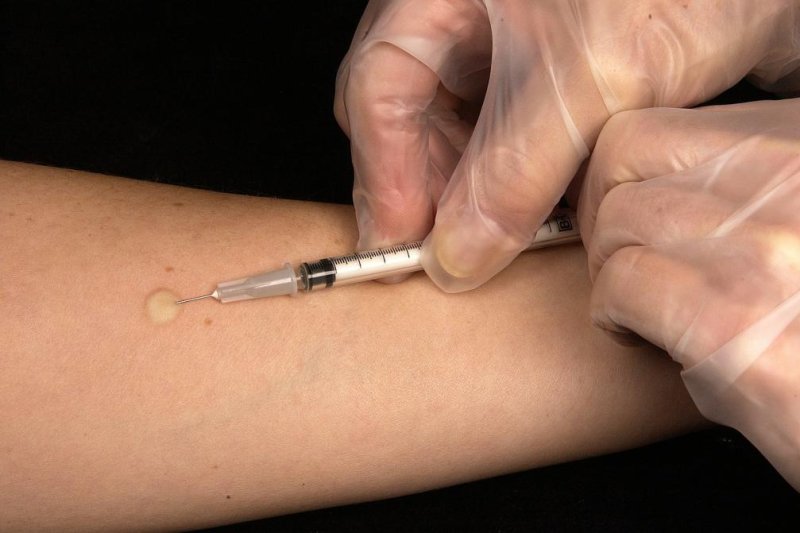A patient is injected with a vaccine to prevent tuberculosis. Researchers found a different antibiotic regimen was effective in preventing people with latent TB infection from developing the full-blown disease. Photo by
Wikilmages/pixabay
Aug. 2 (UPI) -- A different antibiotic regimen with a shorter regimen was effective in preventing people with latent tuberculosis infection from developing the full-blown lung disease, according to a study.
Researchers, led by a scientist at the University of Otago in New Zealand, found that a four-month daily regimen of the antibiotic rifampicin in adults and children was as effective as a nine-month daily regimen of another antibiotic called isoniazid.
"Not only was it as effective at preventing tuberculosis, but the participants were more likely to complete the course and had fewer side effects," Dr. Philip Hill, a professor of international health at the University of Otago, said in a press release. "This is a real step forward in our aspiration to eliminate tuberculosis. It means we can now offer a more attractive option to the many millions of people in the world who are at risk of developing tuberculosis."
The findings were published Thursday in The New England Journal of Medicine.
In the United States because of widespread vaccination, TB is nearly non-existent -- there were 9,421 cases reported in 2014, according to the Centers for Disease Control and Prevention.
The World Health Organization wants to reduce the global TB epidemic's death rate by 95 percent and to cut new cases by 90 percent between 2015 and 2035. In 2017, there were 1.7 million TB deaths, according to WHO.
"Importantly, we know that if we don't find a way to give them preventive treatment, we will never eliminate tuberculosis from the planet," Hill said.
Hill said the risk of TB disease could be brought down to close to zero with preventive treatment. Also, mot people infected after exposure to tuberculosis don't develop the disease because the mycobacterium stays "asleep" in their system.
Working with Dr. Dick Menzies from McGill University in Canada, the study recruited participants 18 and older in Canada, Indonesia, Guinea, Benin, Brazil, Australia, Korea, Saudi Arabia and Ghana from October 2009 through December 2014.
Four cases of TB developed among 3,443 patients in the rifampin group and among 3,416 in the isoniazid group. In a followup of 1,000 patients 28 months after treatment, there were five cases in the traditional method and four in the new way.
There are downsides to the traditional treatment. Nine months of daily isoniazid treatment can be considered a long duration and there are side effects, including the potential to develop hepatitis.
"One option already envisaged is higher dose rifampicin, which is now used safely for tuberculosis meningitis and is being evaluated in the treatment of tuberculosis of the lungs," Hill said. "Preventive treatment using high dose rifampicin for four to six weeks is an obvious option to consider next."















